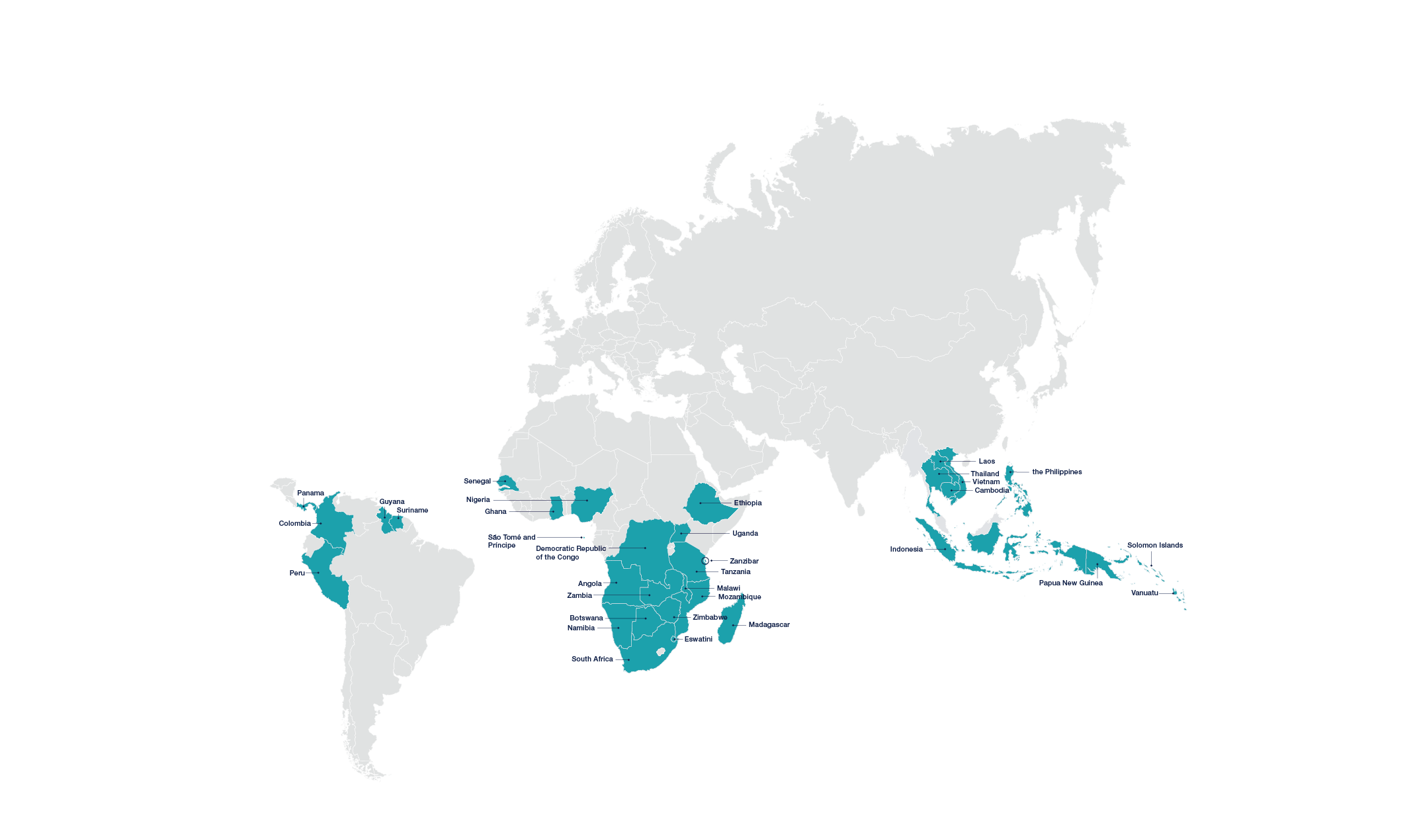How We Work

Whether strengthening surveillance and response strategies, building capacity to use data to inform decision-making, researching drug or vector control interventions, or strengthening program management and financial sustainability, the MEI strives to remain one step ahead of the changing patterns of malaria transmission and the trends in malaria funding. There is no one-size-fits-all approach to eliminating malaria, so we tailor our work and deployment of our expertise to the local context, country priorities, health system, epidemiology and needs of our government and operational partners. And we are committed to developing the next generation of malaria advocates and technical experts in endemic countries through training and mentorship programs.
Over the last fifteen years, the MEI has developed partnerships with national malaria programs, regional malaria elimination networks, implementation and research partners, and donors. Our aim is to develop a close network of collaborating organizations at the subnational, national, and regional levels that have the capacity to implement much of our work, empowering our local partners to take ownership and drive decision-making.
Subnational optimization as our operational focus
While the MEI often works at national level, it is at subnational level where MEI excels, with lessons learned in eliminating and malaria-free countries increasingly being applied to higher burden countries grappling with lower transmission areas and a high degree of heterogeneity. The MEI is supporting governments, donor agencies and implementing organizations to determine how best to tailor appropriate intervention packages and optimize the allocation and sustainability of district health budgets as malaria transmission becomes increasingly focal.
Population-level impact through scaling of tools and approaches
The MEI develops evidence-based tools and approaches that address the unique challenges faced by national malaria programs in heterogeneous transmission settings. This Malaria Elimination Toolkit helps malaria programs understand the drivers of transmission in a target area and the readiness of the health system for elimination; decide what actions to take and how to tailor its response; and ensure efforts are well-managed and sustainably funded. These tools have been used successfully at the national and/or subnational levels, leading to important changes in malaria policy and practice. From the characterization of high-risk populations and the collection and use of entomological intelligence to the subnational allocation of health budgets, contributing to population-level impact requires close collaboration with endemic country governments, implementing organizations, and bilateral and multilateral donors. These partnerships help scale new approaches both within a country and in other countries.
Leveraging engagement at global and regional levels
The MEI maximizes its global policy influence and impact through strategic engagement with multilateral agencies such as the World Health Organization and the Global Fund to Fight AIDS, Tuberculosis and Malaria. We also maintain a strong presence within the RBM Partnership to End Malaria and its associated Working Groups and Partnership Committees. Regionally, the MEI provides technical assistance and capacity building support to a number of platforms driving malaria elimination efforts, including the Asia-Pacific Malaria Elimination Network (APMEN), Asia-Pacific Leaders Malaria Alliance (APLMA), and the Elimination 8 (E8) in southern Africa.
Statement on structural racism
The MEI is committed to examining our practices and breaking down structural barriers that exist in global health research and practice. Our policies, practices and people are aligned with the wider UCSF IGHS statement on structural racism.
Where We Work
